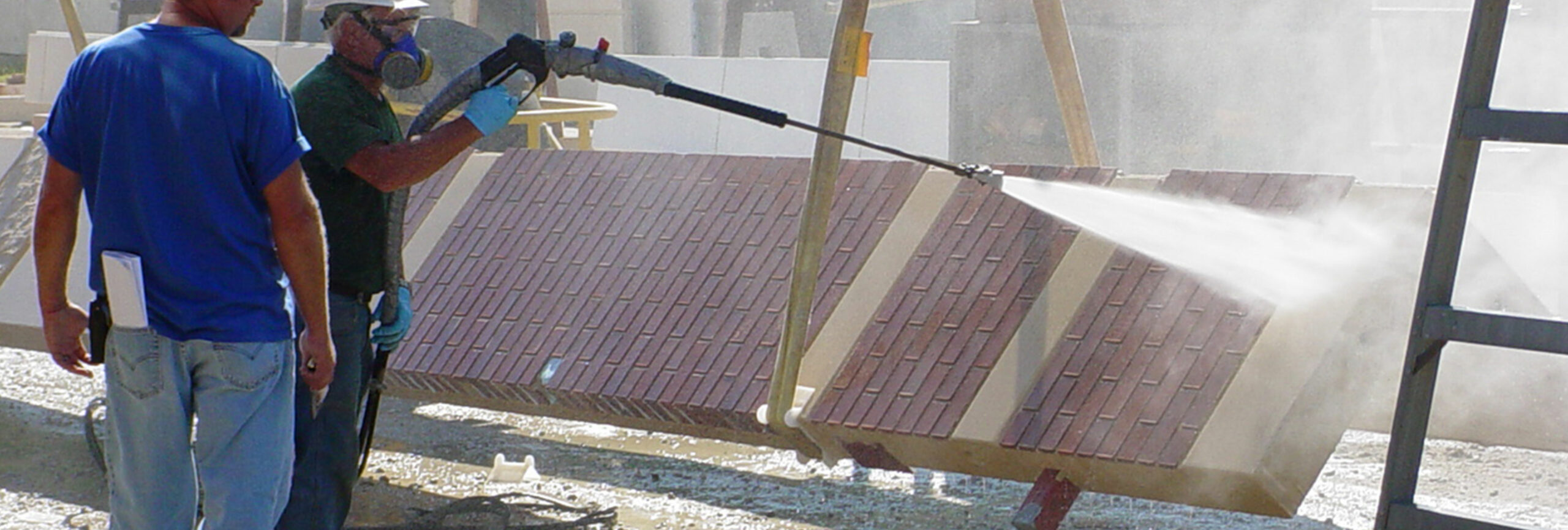
Thin Brick Wax Removal Instructions
METROBRICK® Thin Brick wax removal instructions – important information you need to know before removing the thin brick protective wax.
METROBRICK WAX REMOVAL INSTRUCTIONS
METROBRICK offers a wax option to help reduce the likelihood of cement and other contaminants adhering to the brick face during installation. Completely removing the wax once the brick is in place exposes the clean brick surface and is part of the installation process. Learn more about this process, including required equipment, appropriate water temperature, water pressure range and the importance of spray distance and direction; you may also download the instructions as a PDF here.
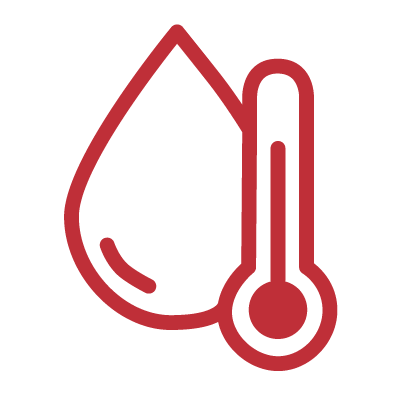
WATER TEMP
180˚F – 200˚F
At the Panel Face
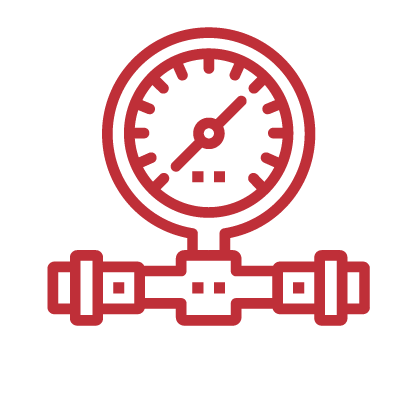
WATER PRESSURE
1,000 – 2,000 PSI
45˚ (white) / 60˚ (black) Spray Tip
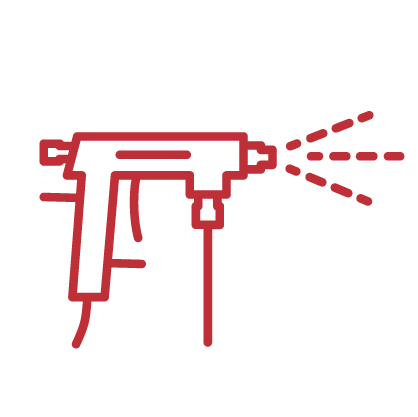
SPRAY DISTANCE
6″ – 8″
Work from Top to Bottom
REQUIRED EQUIPMENT
Commercial Hot Water Pressure Washer capable of minimum 210 (°F) and 1,200 psi
Instant Read Thermometer to test water spray temperature at the brick surface
45° (white) or 60° (black) spray tips for the end of the sprayer nozzle
WATER TEMPERATURE
Appropriate water temperature is a crucial component to ensuring successful wax removal. To remove wax from METROBRICK, water spray temperature should be between 180(°F) – 200(°F) at the face of the panel. Use the instant-read thermometer to check the temperature of the spray at the face of the panel at a normal operating distance — approximately 6” – 8” from the spray tip.
NOTE: DO NOT rely on the pressure washer temperature gauge. Long pressure hoses, uninsulated or poorly insulated hoses, spraying from greater than 6″ – 8″ inches away from the brick and cold ambient temperatures may reduce the actual water spray temperature at the point of contact and can make it difficult or impossible to remove the wax effectively.
WATER PRESSURE
Along with water temperature, proper water pressure must be attained for successful wax removal. To remove wax from METROBRICK, use a large volume of very hot water at low pressure to melt the wax. We recommend using a 45° (white) or 60° (black) spray tip at 1,000 – 1,200 PSI for best results.
NOTE: Higher pressure is NOT better and can cause other problems, including atomizing the wax and sending it airborne, only to be redeposited elsewhere on the panel. Remember, the goal is to melt the wax and allow the water to rinse it off the panel, not to blast it like a sandblaster with excess pressure.
SPRAY DISTANCE & DIRECTION
Once desired water spray temperature and water pressure are achieved, the panel is ready for spray. While maintaining a 6″- 8″ spraying distance from the panel, start from the top and work slowly and evenly from side to side, gradually working your way down the panel. Proper distance and direction will allow the water to melt the wax and then carry it down the face of the panel. Be sure to angle the spray tip down to avoid spraying the wax back on areas that have already been cleaned. Protect nearby panels that have already been washed from overspray.
WAX REMOVAL TROUBLESHOOTING
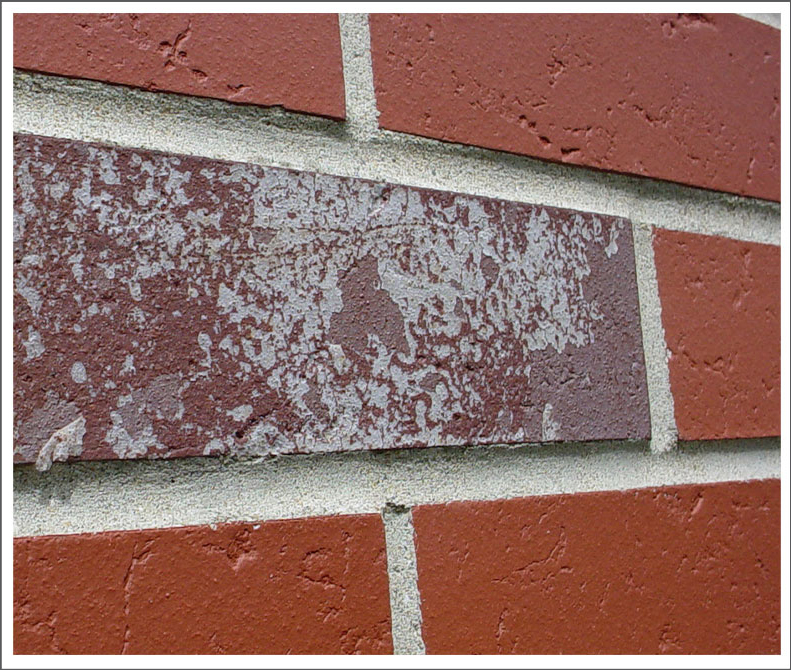
White Flakey Wax on the Brick Faces?
This is caused because proper water spray temperature was not achieved or maintained. If you fail to reach or sustain 180°F – 200°F water spray temperature at the panel, you may remove some of the wax. However, some wax may remain, resulting in a white flakey wax remaining on the brick faces as the residual wax weathers.
![]() PRIMARY CAUSE | WATER TEMP
PRIMARY CAUSE | WATER TEMP
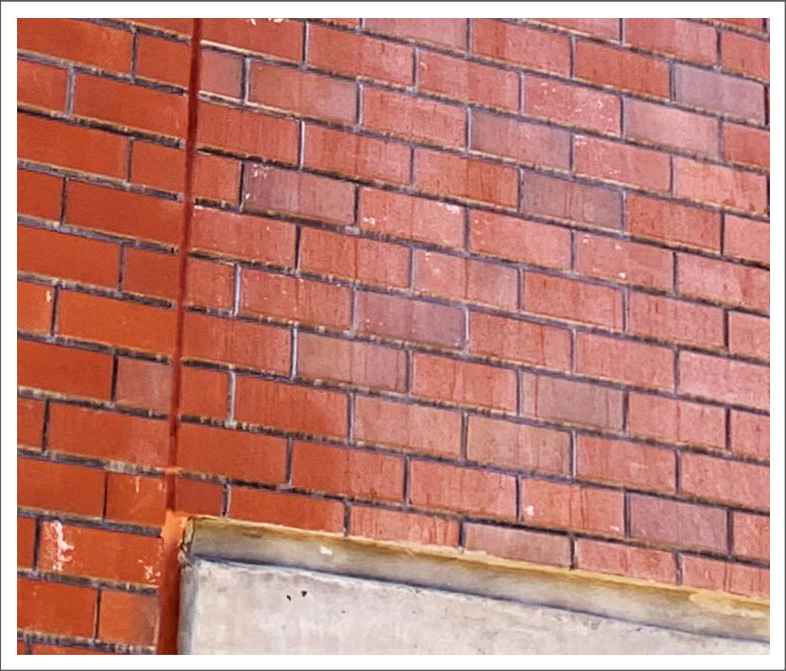
White Dust or Powder-Like Coating on the Bricks?
This is caused when the water pressure is too high. For example, if you have achieved and maintained the proper 180°F – 200°F water spray temperature but the water pressure is above the recommended 1,000 – 1,200 PSI, it will likely melt the wax. However, it can have the unintended consequence of atomizing the wax, sending the particles airborne, and potentially redepositing them as white dust or powder-like coating elsewhere on the panel.
![]() PRIMARY CAUSE | WATER PRESSURE
PRIMARY CAUSE | WATER PRESSURE
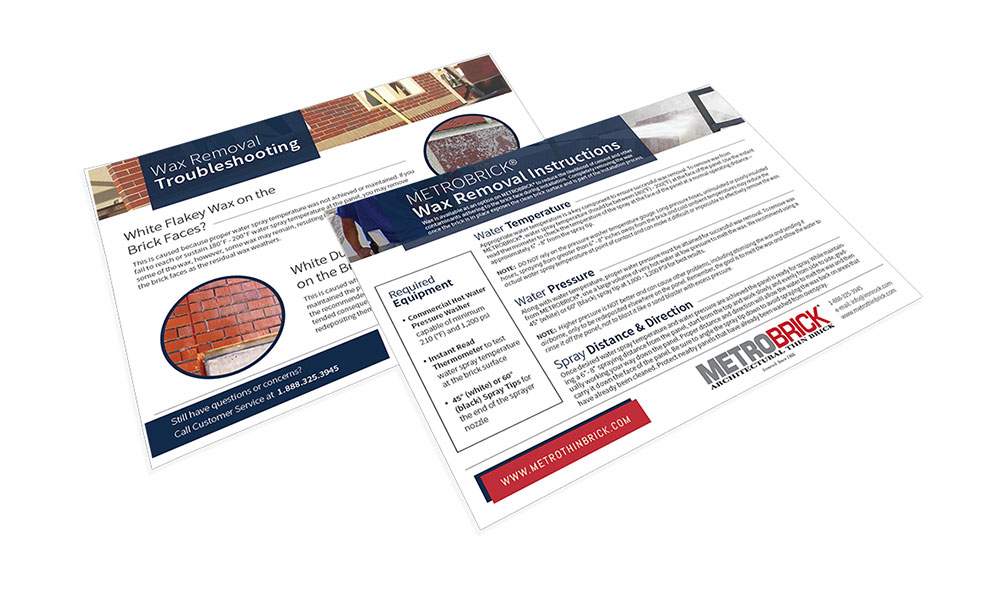
DOWNLOAD WAX REMOVAL INSTRUCTIONS
Need the METROBRICK wax removal instructions in PDF format? Use the button below to download and distribute as desired.